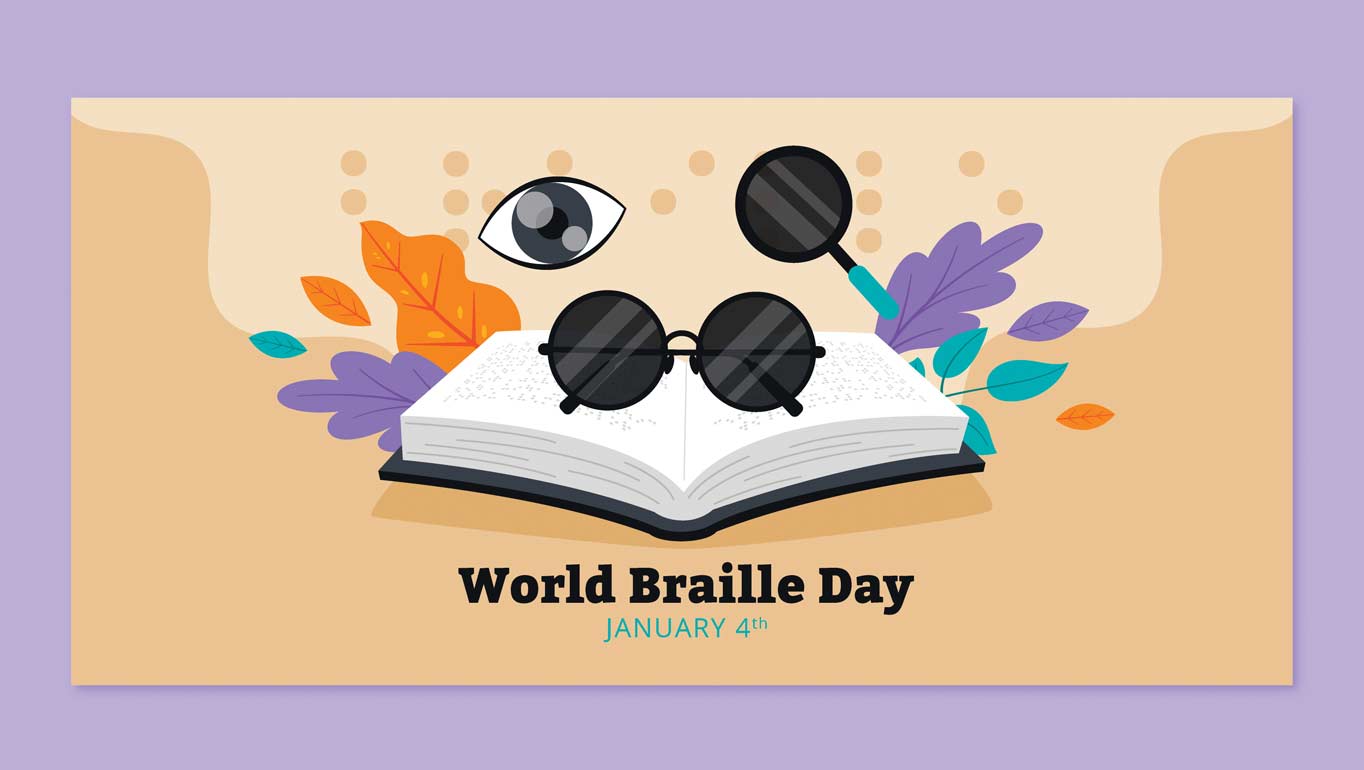The ideas and technology are fully available to those who can develop solutions to improve the condition of people who cannot see (totally or partially), however not all countries and non-profit organizations have access to the funds to acquire them. What are the priorities of the organization that carries the banner of global needs? To celebrate World Braille Day on 4 January, we spoke with Mark Workman, CEO of the World Blind Union. This day is a good opportunity for the cry of what is needed to be heard loud, clear, and across the board.
What does World Braille Day represent in your organization?
World Braille Day is more than just a day on the calendar for us, it embodies the essence of our mission: empowerment through inclusivity. It’s a day for celebration, but also for reflection. We celebrate the achievements made in making the world more accessible for persons who are blind or partially sighted. We also reflect on the gaps that still need to be filled, and recommit ourselves to advocating for the adoption of Braille and other assistive technologies that serve as lifelines to education, employment, and community inclusion.
What is the role of the World Blind Union for the 190 member organizations globally?
The World Blind Union serves as a coordinating and guiding entity for our 190 member organizations around the world. We provide resources, facilitate collaboration, and act as a collective voice on international platforms to advocate for the rights and needs of those who are blind or partially sighted. Our role is to ensure that these organizations are equipped with the necessary tools and knowledge to empower their members at the local level.
In general terms, are these organizations receiving subsidies from their governments to assist their members?
The level of government support varies significantly from country to country. While some governments offer substantial subsidies and resources, others have much room for improvement. The World Blind Union is continually working to advocate for better financial and policy support from governments worldwide, so that our member organizations can offer a higher standard of services and resources to their members.

Mark Workman, CEO of the World Blind Union.
What are the latest innovations you could share with us to improve the lives of people with disabilities?
Like many others, we are particularly excited about the advancements in AI that have the potential to revolutionize the way blind and partially sighted individuals interact with their environment. From AI-powered apps that can narrate the visual world in real-time to systems that can read aloud and interpret text from virtually any source, the technology holds the promise of breaking down long-standing barriers to information and communication. However, it’s worth noting that this technology raises some ethical questions that need to be carefully considered. One such concern is the potential for blind individuals to rely on AI-generated opinions about another person’s appearance, which can lead to unintentional biases and misunderstandings. Striking the right balance between utility and ethical considerations is crucial as we explore the possibilities AI can offer.
Is ELIA Frames an alternative to Braille?
While ELIA Frames presents an interesting option, it should not be considered a substitute for Braille. Braille’s global recognition, versatility, and applicability across a range of disciplines, including STEM fields, make it irreplaceable. Although alternative systems have their merits, Braille remains the most widely accepted and effective tactile reading system for the blind and partially sighted community.
What can you share with us about how augmented reality and virtual reality are contributing to the cause?
While augmented and virtual reality technologies are in the early stages of their potential applications for the blind and partially sighted community, they hold promise for offering new tools for accessibility and inclusion. For instance, augmented reality can overlay auditory or tactile information on real-world settings, aiding in navigation or environmental understanding.
Virtual reality can serve as a secure environment for training, where individuals can practice navigation and other essential skills. However, it’s essential to recognize that we are still discovering the full range of possibilities and limitations these technologies may offer.
How far are we from a person who is born or becomes blind being able to see again in the short term?
While the World Blind Union supports advancements in medical science aimed at preventing or curing blindness, our primary focus is different. We are committed to creating a world where blind and partially sighted individuals can flourish alongside their sighted counterparts, regardless of whether a cure for blindness becomes available. The idea is not just to dream of restoring sight but to act on making the world accessible here and now.
What is the role the Union would like to play with the United Nations?
The World Blind Union aims to act as a bridge between international commitments and local action. Our goal is to translate pledges and agreements—such as those related to the Sustainable Development Goals, the Convention on the Rights of Persons with Disabilities, and the Marrakesh Treaty—into tangible improvements at the grassroots level. This push for localization is central to our partnership with the United Nations. We want to ensure that global policy-making has a real-world impact that enhances the lives of the blind and partially sighted community.


